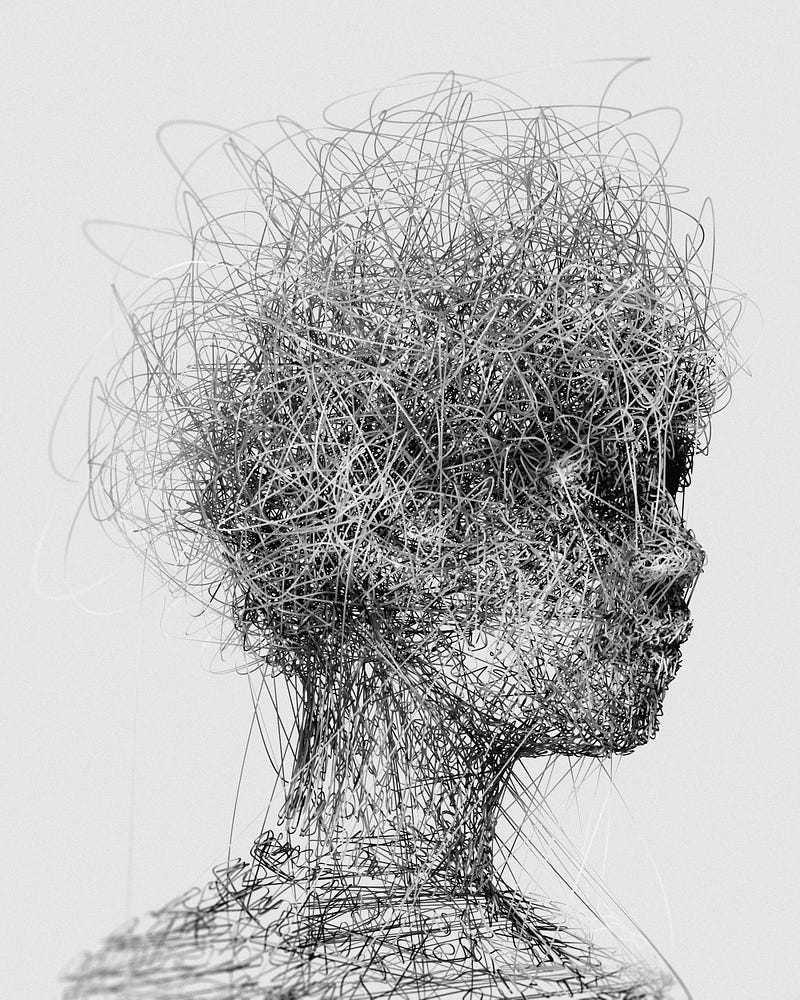Transforming Shame into Self-Acceptance: A Path Forward
Written on
Understanding Guilt vs. Shame
Guilt and shame are emotions that are often confused, yet they are fundamentally different. While guilt is the regret or remorse we feel for actions we've taken, shame is a deeper feeling of worthlessness or inadequacy linked to our identity.
Guilt can be a constructive emotion that encourages us to make amends, whereas shame can lead to a belief that we are inherently flawed or unlovable. For instance, a student who receives a poor grade may feel guilty about not studying enough, but if they think they’re “stupid” for the grade, they experience shame instead.
To illustrate this further, consider someone who faces rejection in a romantic context. They may feel guilty for not being more proactive, but if they internalize the rejection as a reflection of their worth, shame can take over.
To better understand and manage shame, journaling can be a valuable tool. Documenting moments when shame arises allows us to recognize patterns in our thoughts and feelings. For example, by reflecting on my struggles with weight, I learned to distinguish between feeling guilty about unhealthy eating habits and feeling shame about my appearance.

Photo by Resource Database on Unsplash
Identifying Shame Triggers
To foster new perspectives, we can challenge our beliefs and ask if they truly reflect reality. Utilizing a shame triggers worksheet can be an effective way to identify and confront these emotional triggers.
Start by documenting past situations that caused embarrassment, then note the specific thoughts or beliefs tied to those experiences.
Example:
Situation: Facing rejection from a partner
Thoughts/Beliefs: “I’m not good enough,” “I’m unlovable.”
Situation: Being overlooked for a job promotion
Thoughts/Beliefs: “I’m not intelligent enough,” “I lack diligence.”
Situation: Experiencing bullying in school
Thoughts/Beliefs: “I’m not cool enough,” “I’m weak.”
Once you’ve identified these triggers, challenge the negative thoughts with more positive, realistic affirmations. Instead of thinking, “I’m so stupid,” remind yourself that everyone makes mistakes and that they don’t define your intelligence.
Here’s a worksheet to assist you in identifying shame triggers:
- Write about a recent incident where you felt shame.
- Note the thoughts, feelings, and physical sensations experienced.
- Challenge these thoughts by questioning their validity.
- Write a balanced perspective on the situation.
- Repeat this process for other shameful experiences.
Guilt and shame are distinct; guilt involves regret for actions, while shame relates to feelings of inadequacy about oneself.

Photo by Alexander Krivitskiy on Unsplash
Rewriting Your Shame Story
The transformation begins with creating new memories. Rather than numbing our feelings, we can engage in actions that foster positive experiences. Shame can be a debilitating emotion, yet we can rewrite our shame narrative to foster change.
Understanding the roots of our shame allows us to recognize the experiences that shaped our feelings. Self-reflection is crucial; we can reframe our past in a way that highlights growth rather than deficits.
Strategies for Reframing:
- Reframe Your Narrative: View past events as opportunities for personal growth and resilience. Document your new perspective and revisit it regularly.
- Practice Self-Compassion: Treat yourself with kindness to diminish shame’s hold and cultivate a more positive self-image.
- Surround Yourself with Support: Build a network of encouraging friends and family who can help you reframe your experiences.
Before you conclude your journey, remember:
- Understanding our past fosters self-awareness, providing insights for continuous improvement. Focus on creating new experiences rather than escaping uncomfortable feelings.
- Acknowledge that shame is a universal emotion; everyone experiences it. Avoid being overly critical of yourself, and concentrate on progress rather than perfection.
Thank you for engaging with this content! If you found it valuable, consider sharing it, and follow for more insightful articles.
More practical transformational guides for a peaceful and fulfilling life:
The Cost of Compromising Our Values: A Wake-Up Call to Remember What Matters
There is a price to be paid for the compromise of our values.
Chapter 2: Video Insights on Shame and Self-Acceptance
This video, "Breaking Free | Free from Shame," features Venice Robinson discussing the journey to liberate oneself from the shackles of shame.
In this video, "From Shame to Self Acceptance," viewers explore the transformative journey of moving from feelings of shame to embracing self-acceptance.